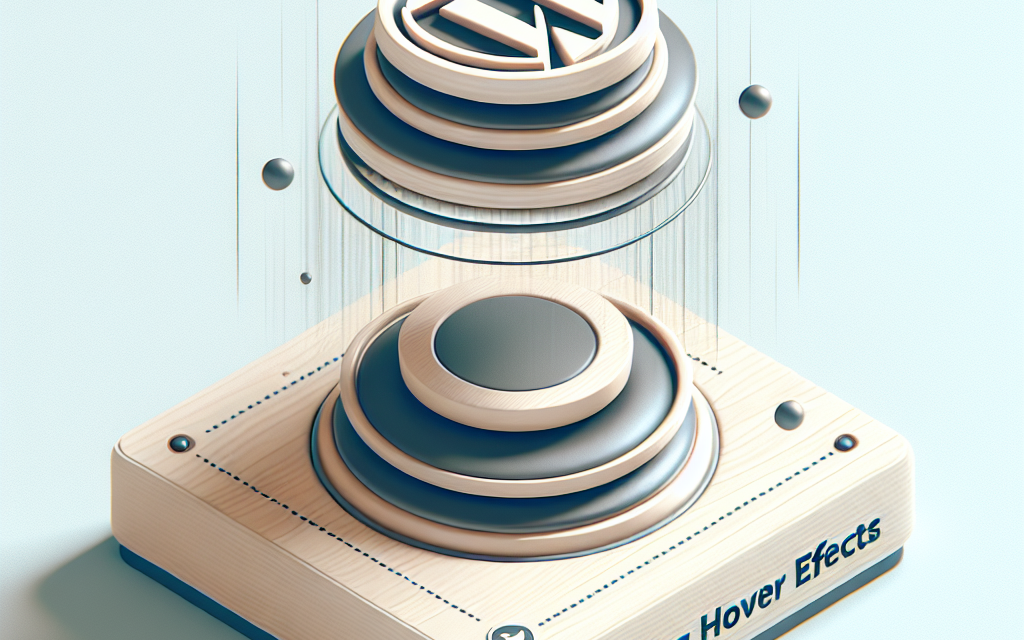In today’s digital landscape, creating an engaging user experience is paramount. One effective way to achieve this is through hover effects. In this article, we’ll explore how to master hover effects in your WordPress site, enhancing interactivity and design without the need for extensive coding knowledge.
What Are Hover Effects?
Hover effects are visual changes that occur when a user hovers their mouse over an interactive element on a webpage, such as buttons, images, or links. They add a layer of excitement and engagement, encouraging users to interact with your content.
Why Use Hover Effects?
- Increased Engagement: Hover effects grab attention and invite users to explore more, increasing interactions.
- Visual Appeal: They enhance the aesthetic quality of your design, making your site more visually appealing.
- Guiding Users: Effective hover effects can guide users toward important actions, such as signing up, purchasing, or more information.
Types of Hover Effects
Here are some popular hover effects you can easily implement in WordPress:
1. Color Change
A simple yet effective hover effect where the element changes color when hovered over. This can be used for buttons, links, or images.
2. Scale Effect
This effect enlarges or shrinks an element on hover. It provides a dynamic interaction that can make buttons and images stand out.
3. Opacity Change
Changing an element’s opacity gives a subtle look that can enhance images and links, creating a more immersive experience.
4. Shadow & Glow Effects
Adding shadows or glow can make elements pop off the page. This is particularly useful for calls to action.
Implementing Hover Effects in WordPress
Several methods exist for applying hover effects in WordPress:
Using CSS
For those comfortable with code, you can easily add hover effects using CSS. Here’s a basic example:
css
.button:hover {
background-color: #ff5722; / Change background color on hover /
color: white; / Change text color on hover /
transform: scale(1.1); / Scale the button /
}
Add this code to your WordPress site by navigating to Appearance > Customize > Additional CSS.
Utilizing Plugins
For users who prefer not to dive into code, there are many WordPress plugins available, such as:
- WP Page Animations
- CSS Hero
- Elementor (which has built-in hover effects)
These tools often provide user-friendly interfaces, allowing you to apply complex hover effects with ease.
Image Hover Effects
If you’re looking to create stunning interactions with images, plugins like Image Hover Effects can make the process seamless.
Best Practices for Hover Effects
- Keep It Subtle: Overly dramatic effects can distract rather than engage.
- Maintain Consistency: Use similar hover effects across your site for uniformity.
- Test for Usability: Ensure the hover effects work on all devices, particularly for touch screens where hover actions may be limited.
Conclusion
Mastering hover effects can significantly elevate the interactivity of your WordPress design elements. By enhancing engagement and guiding users, you’re not only making your site visually appealing but also improving the overall user experience.
Call to Action
Ready to take your WordPress site to the next level? Explore WafaTech’s NextGen WordPress Hosting for unparalleled speed, security, and support tailored to your needs. Discover more here!
For more resources on WordPress, don’t forget to check the official documentation for guidance and tools to enhance your website truly. Happy designing!




